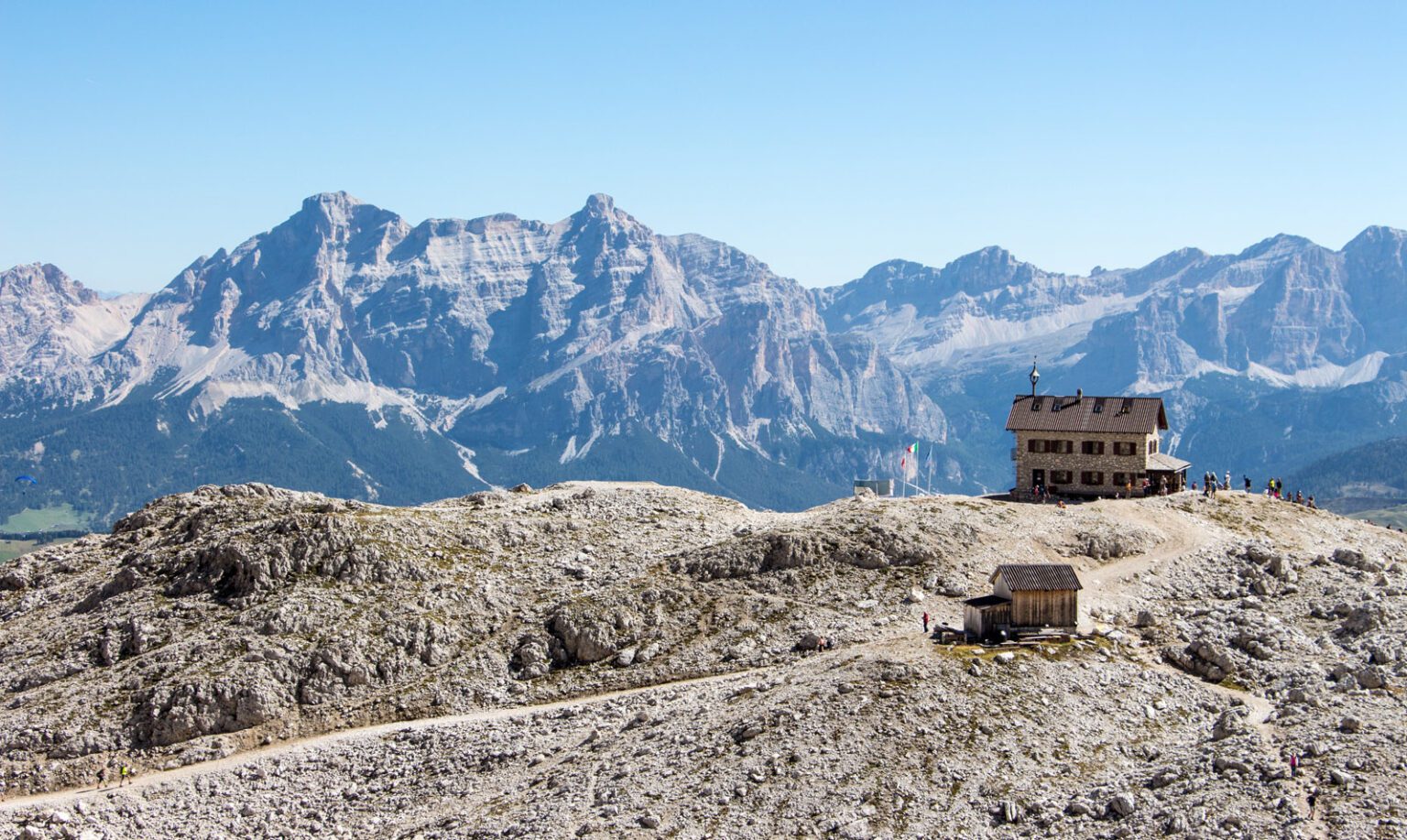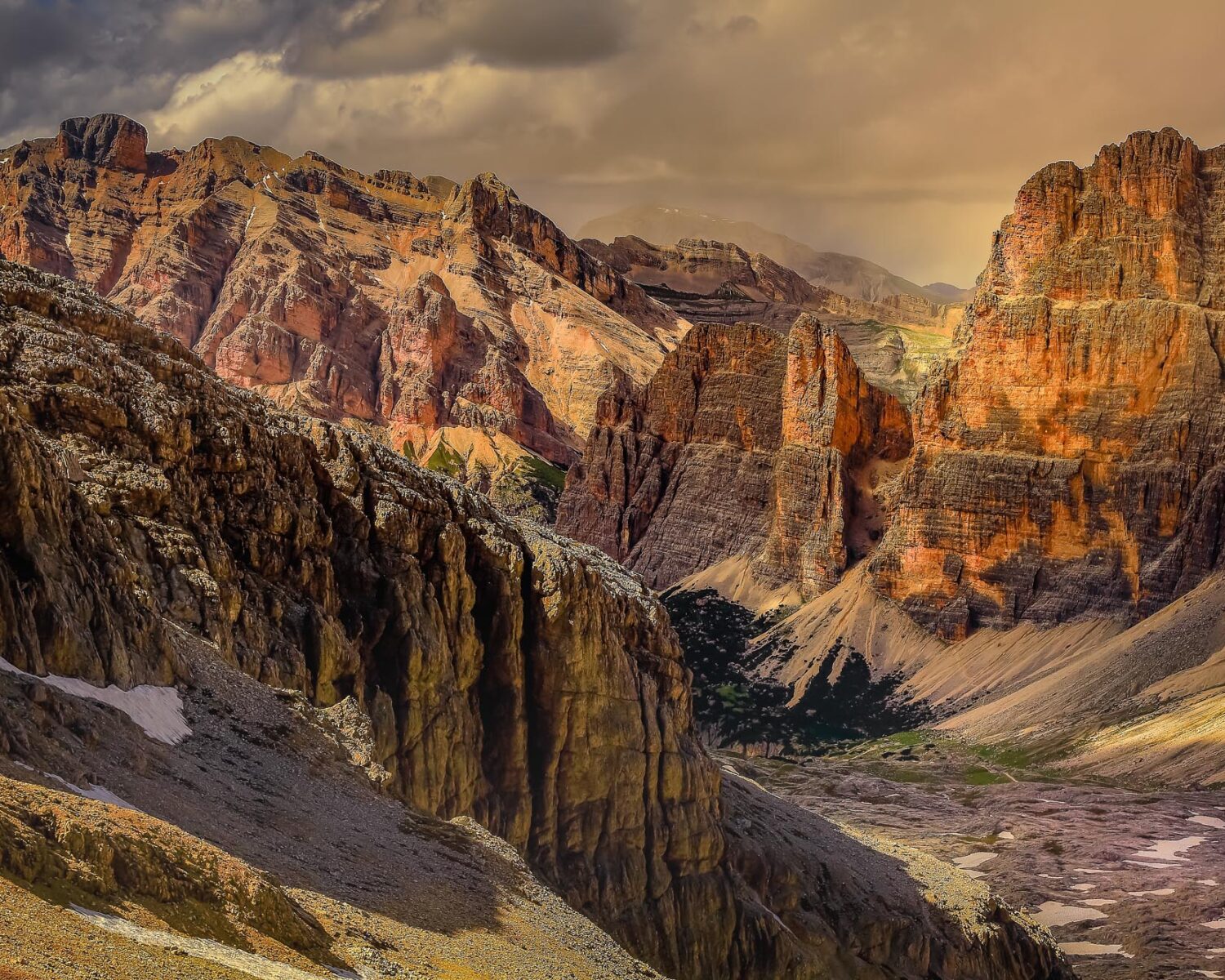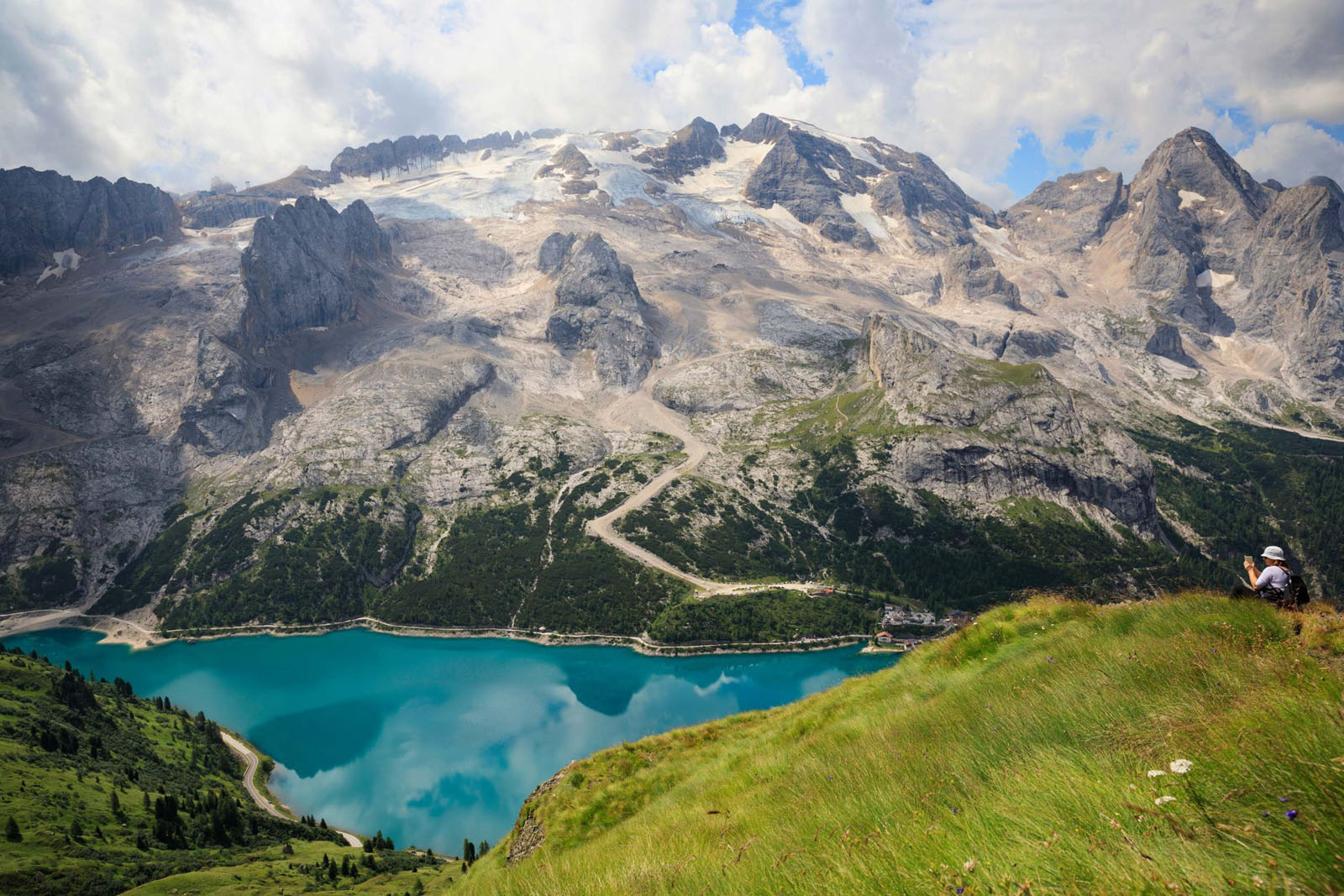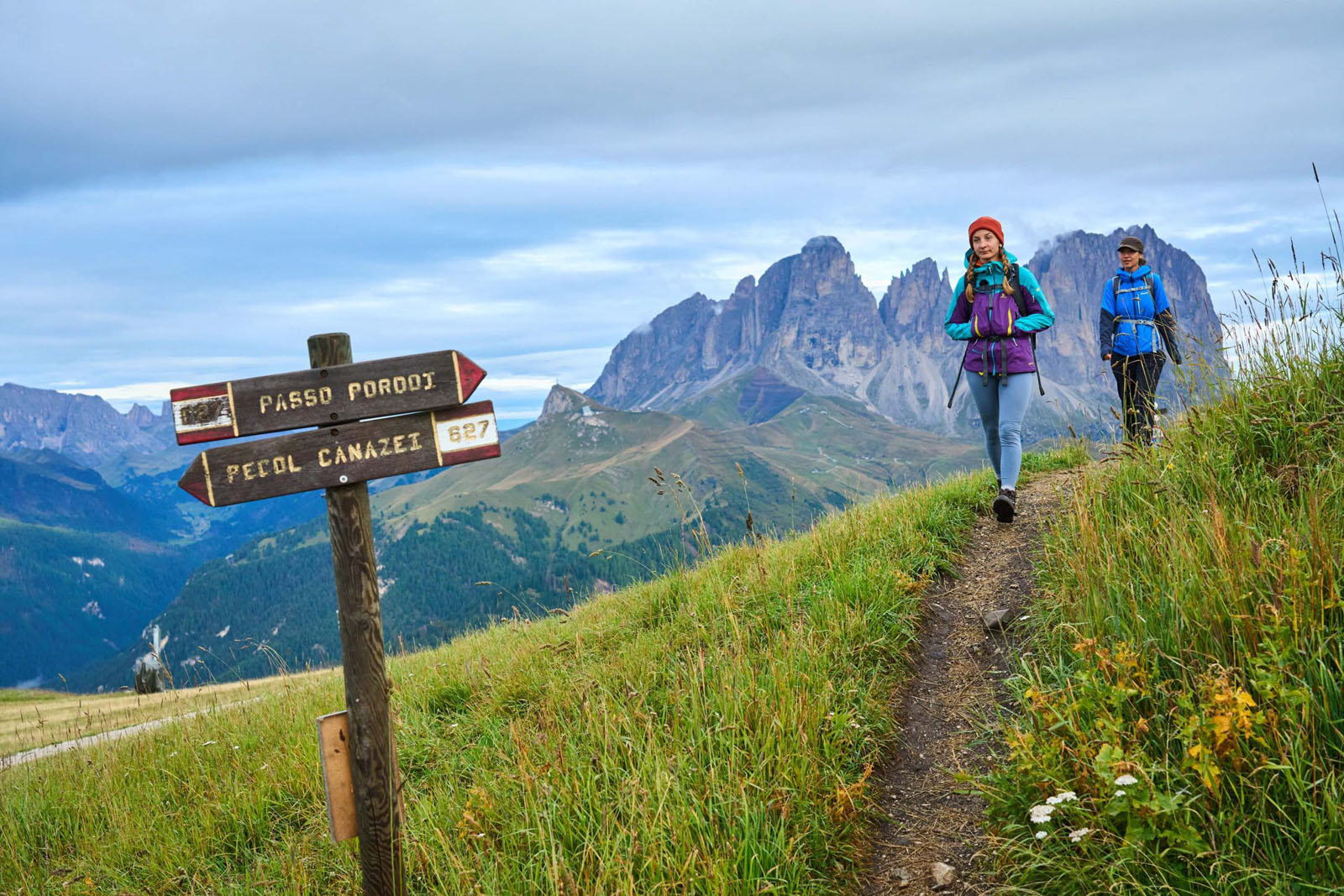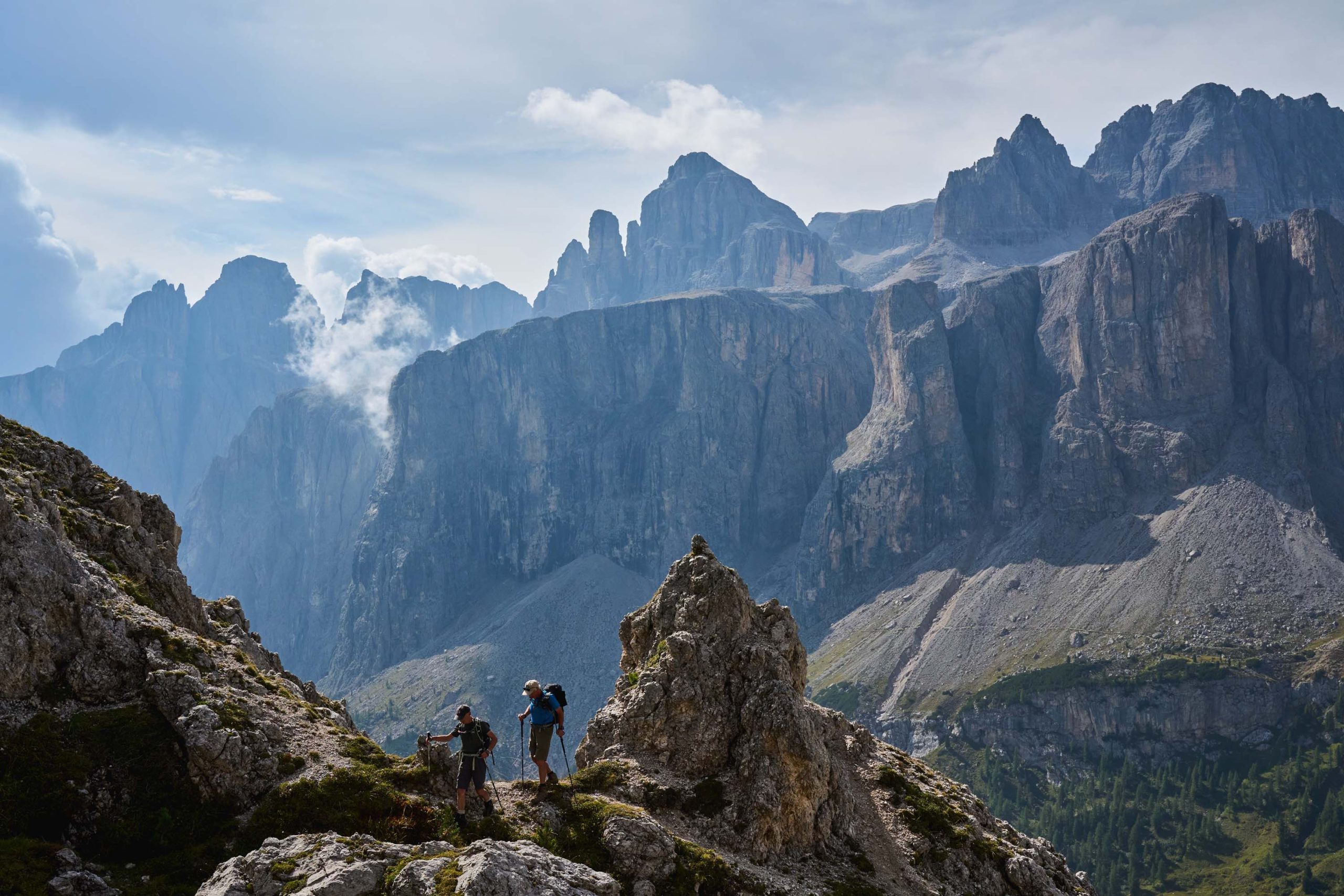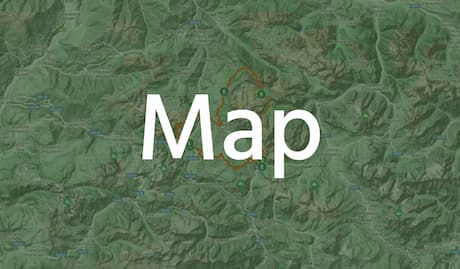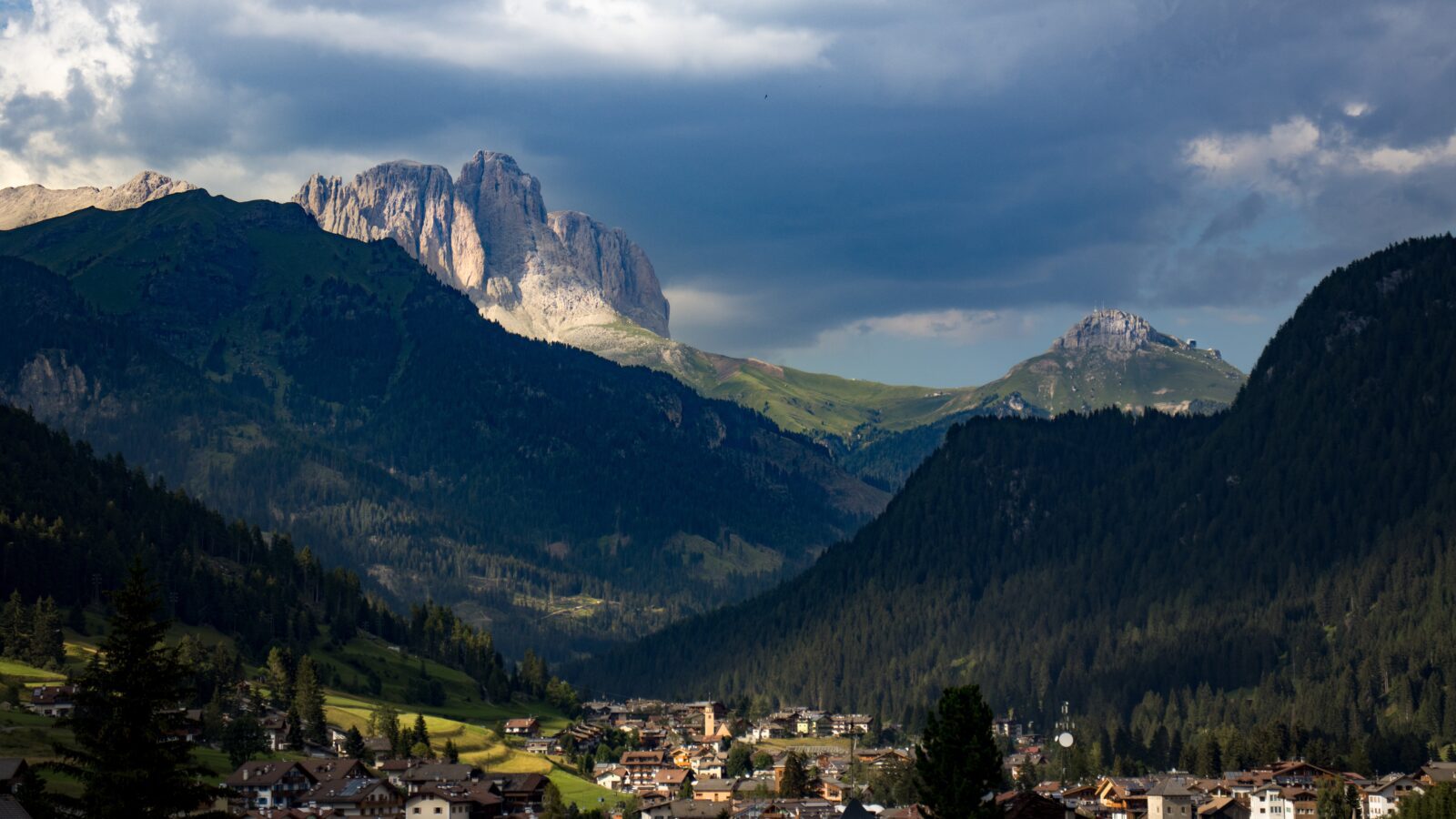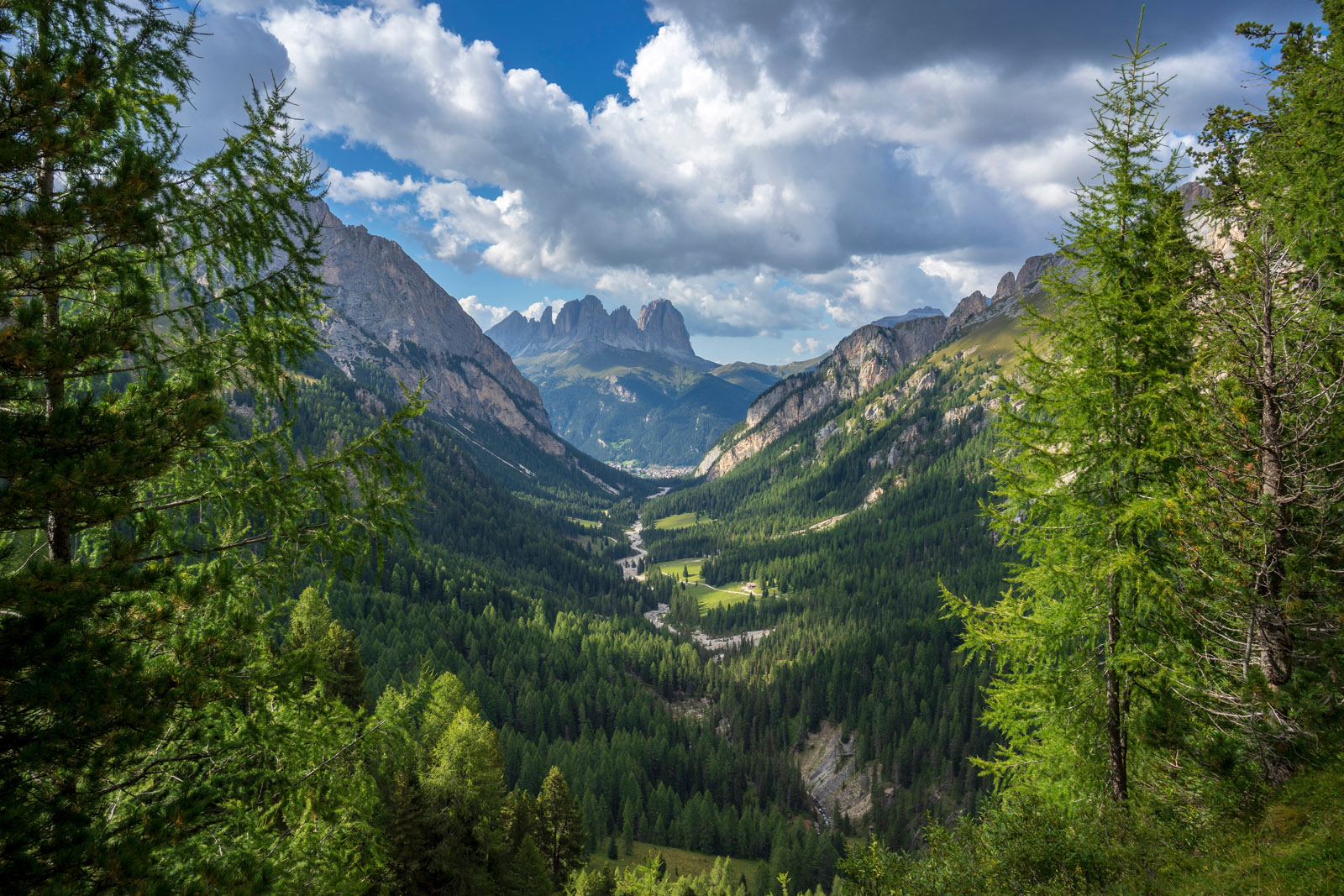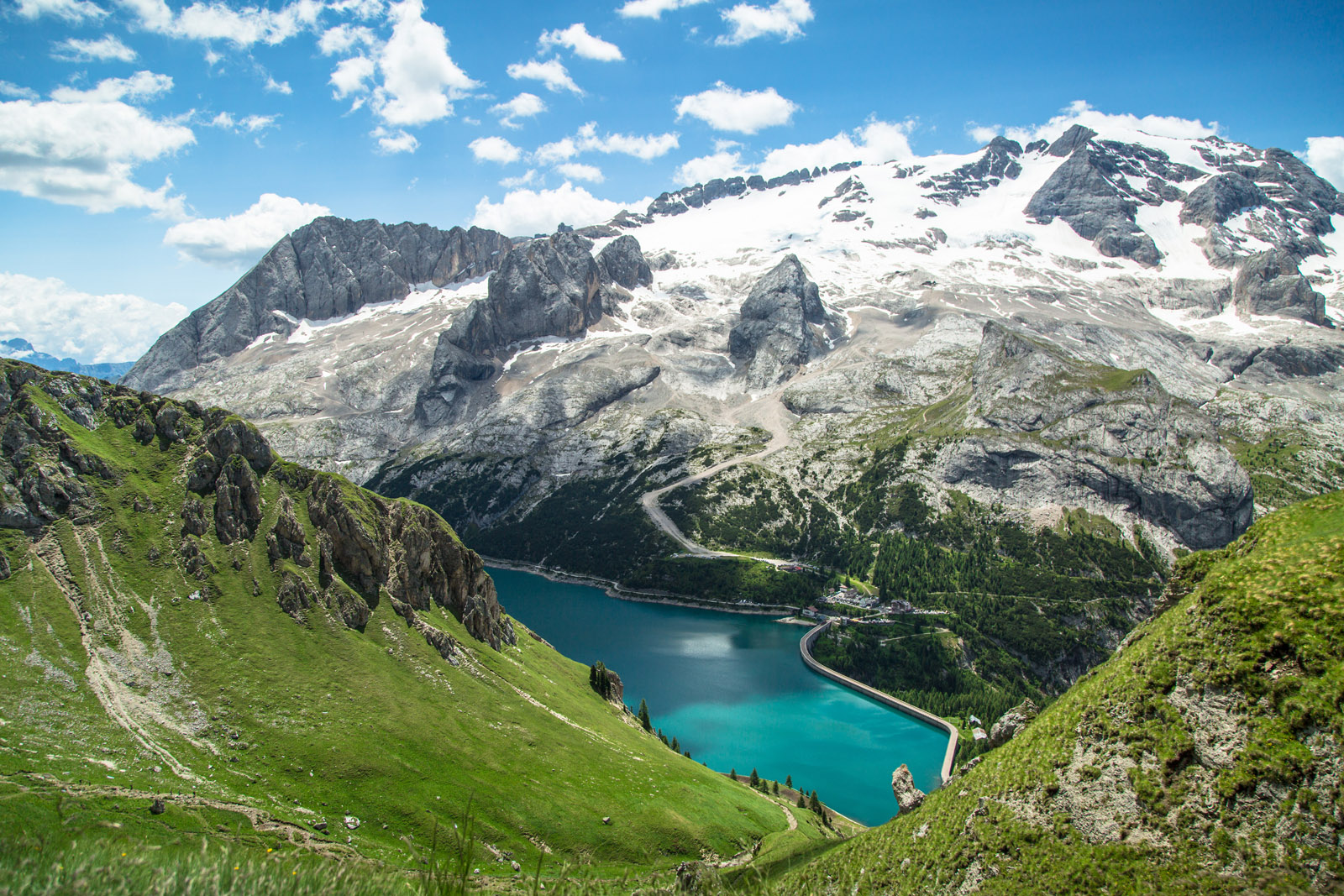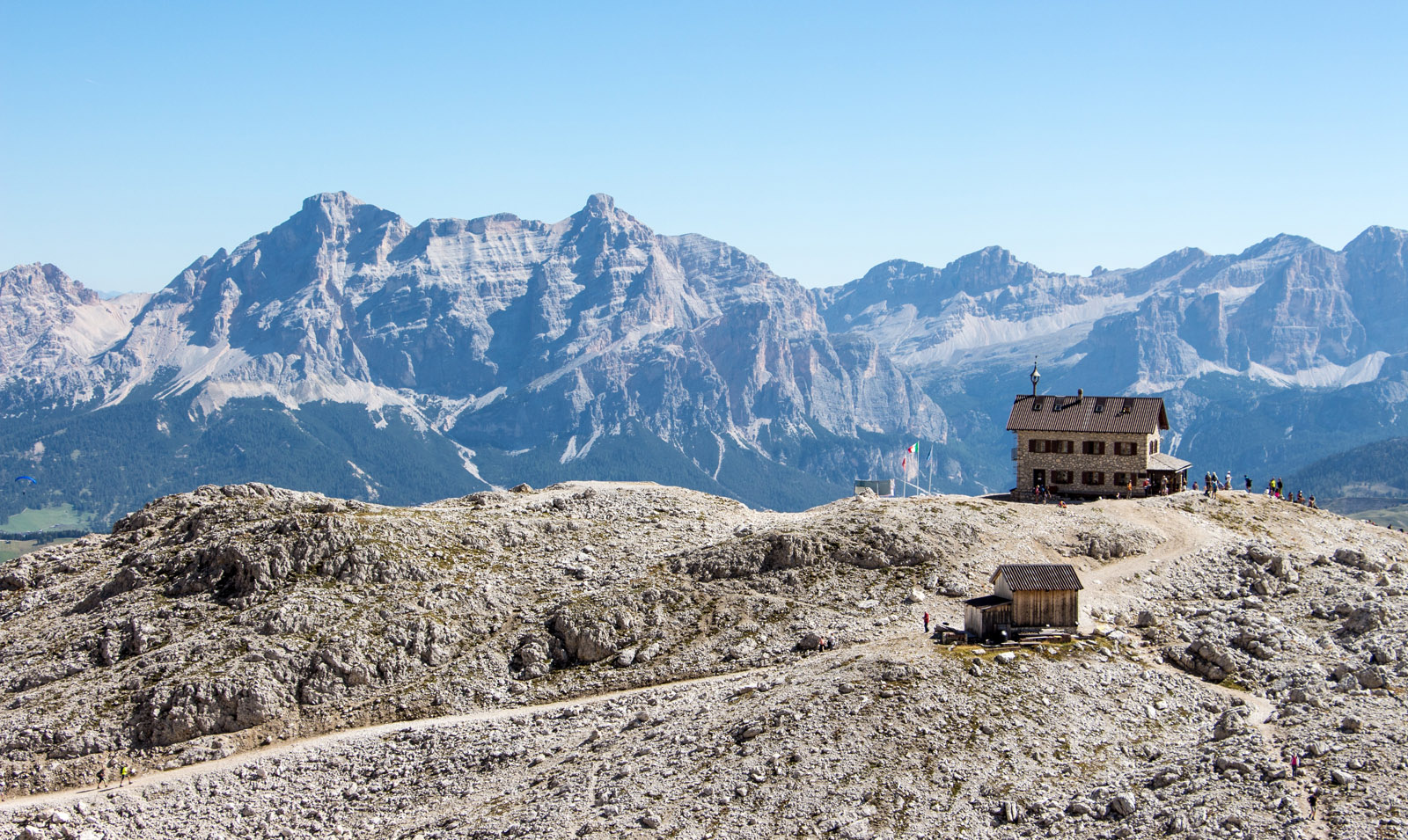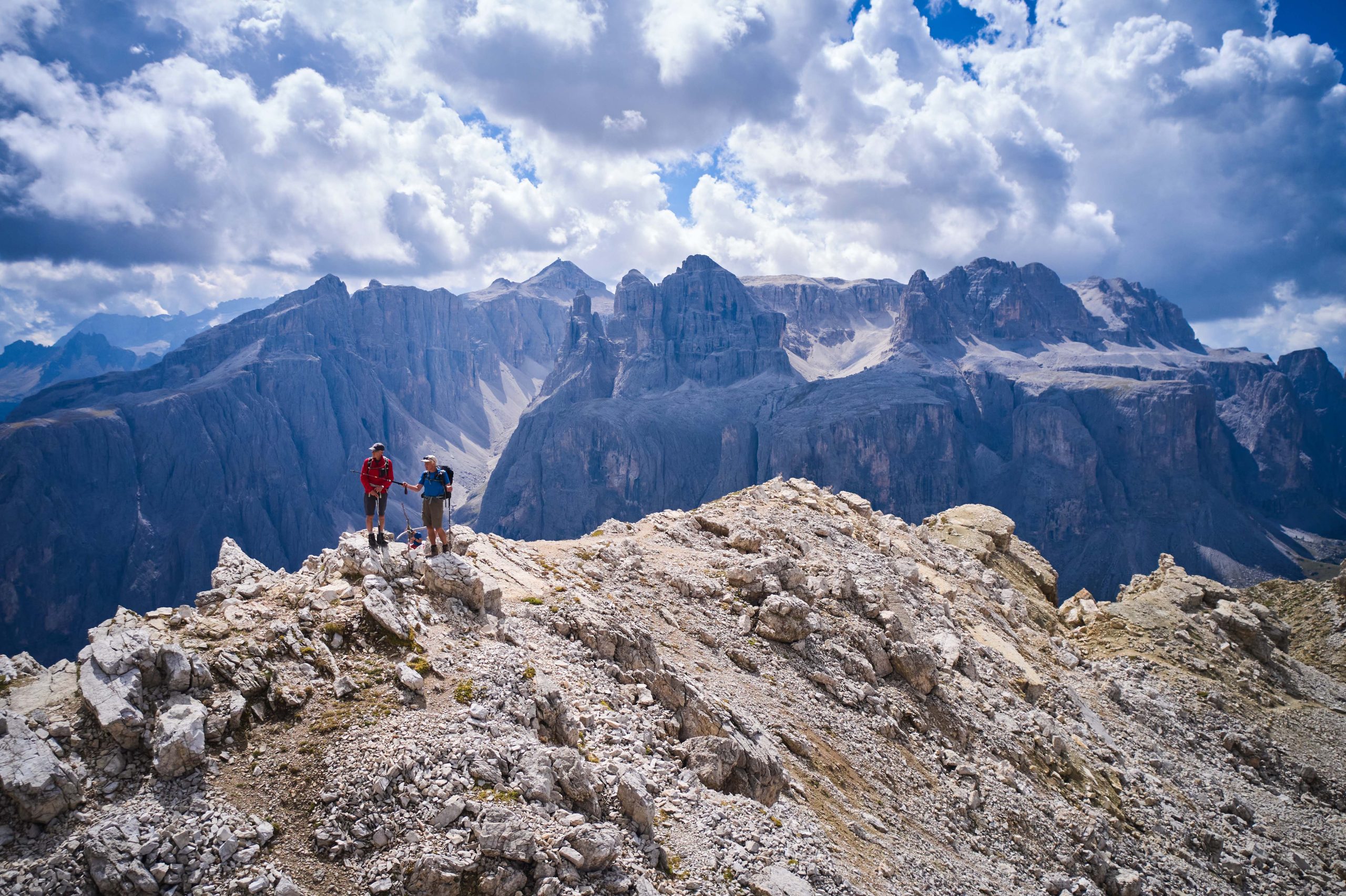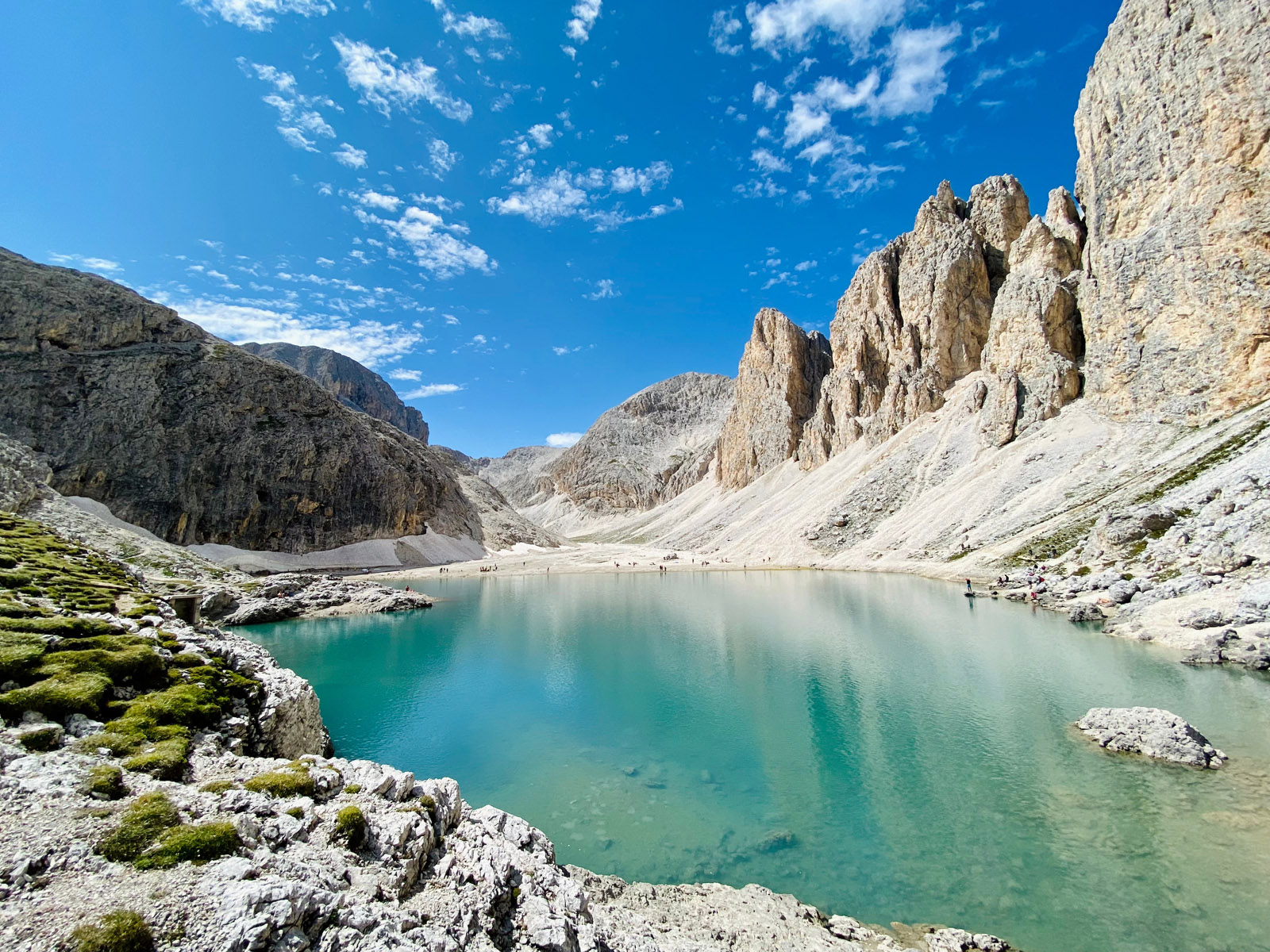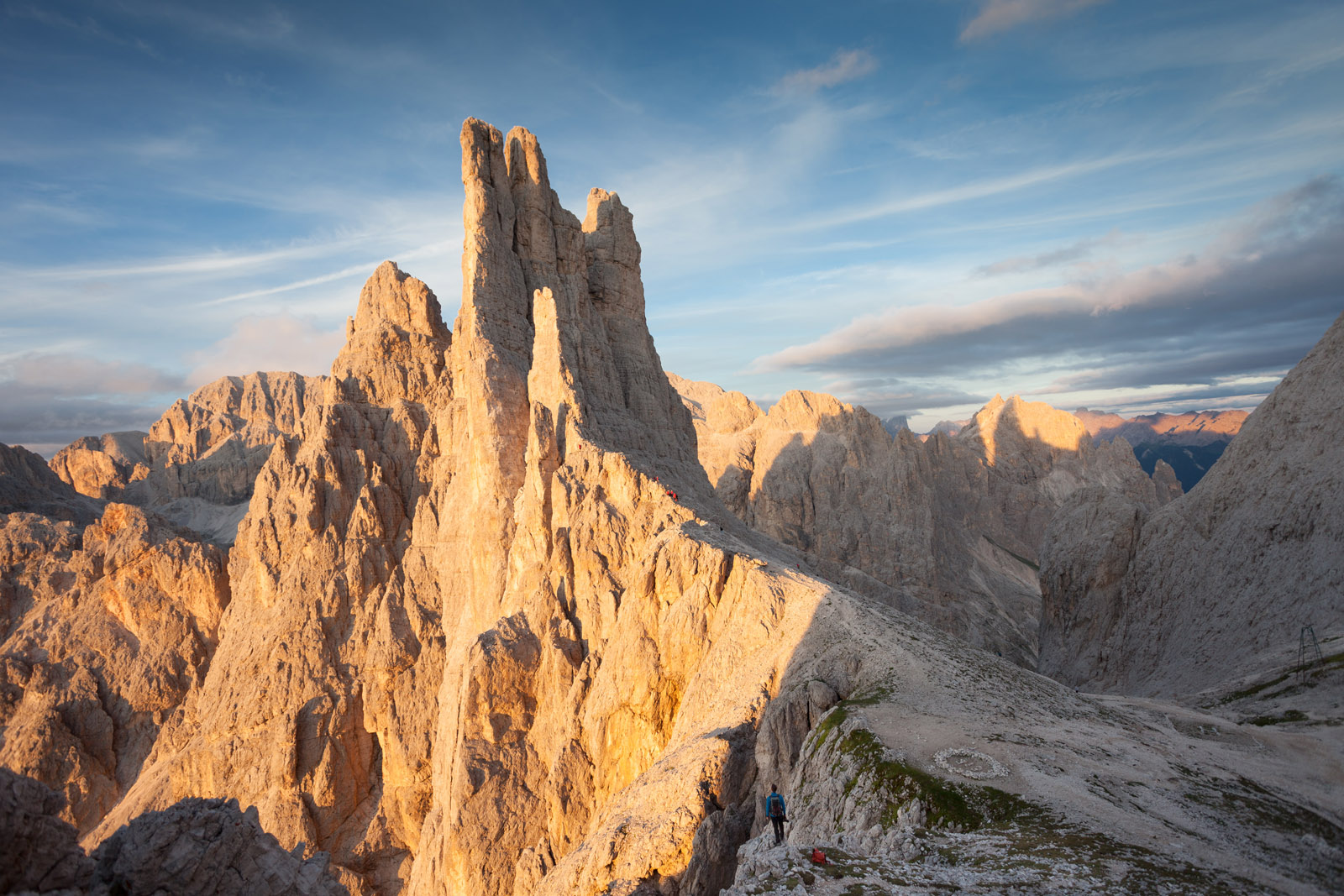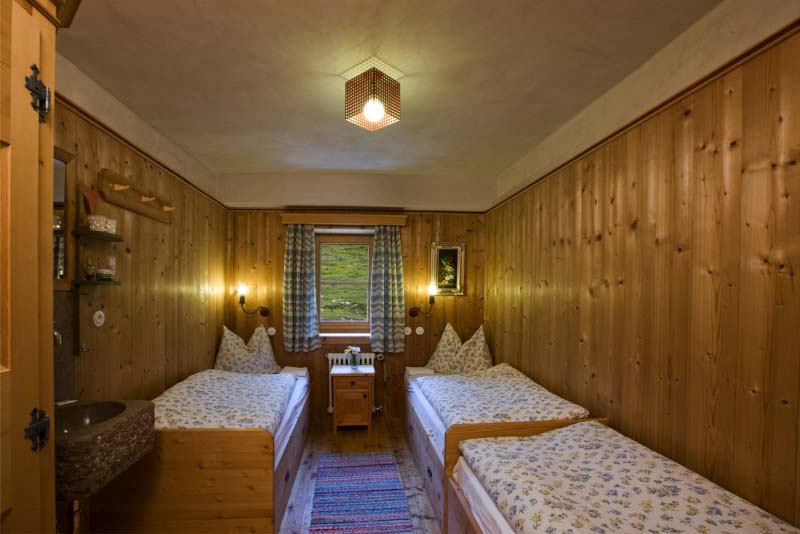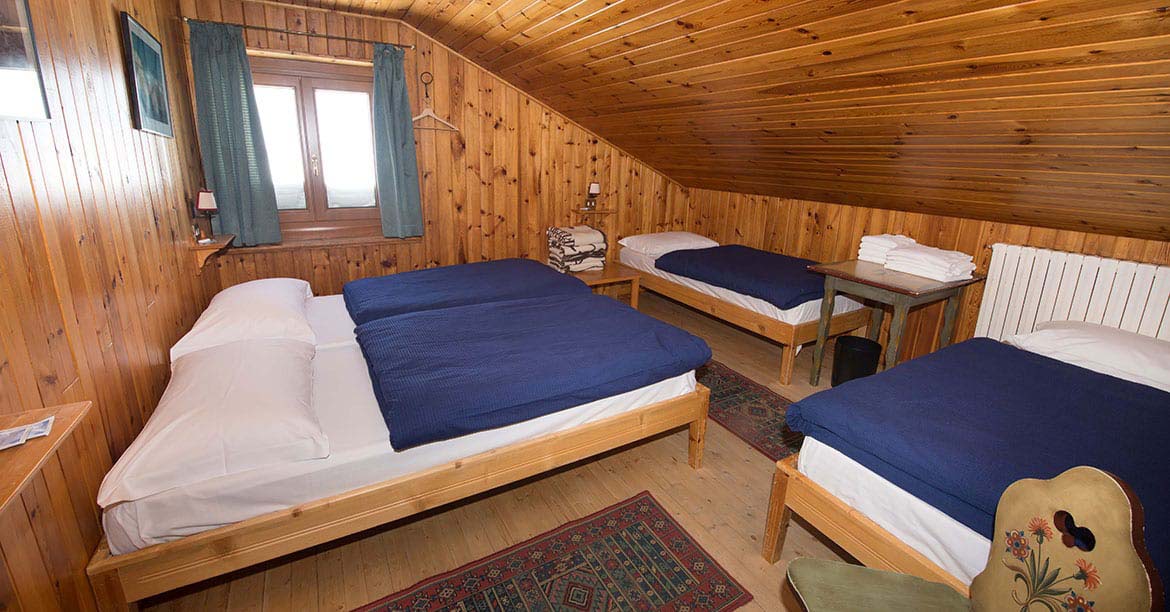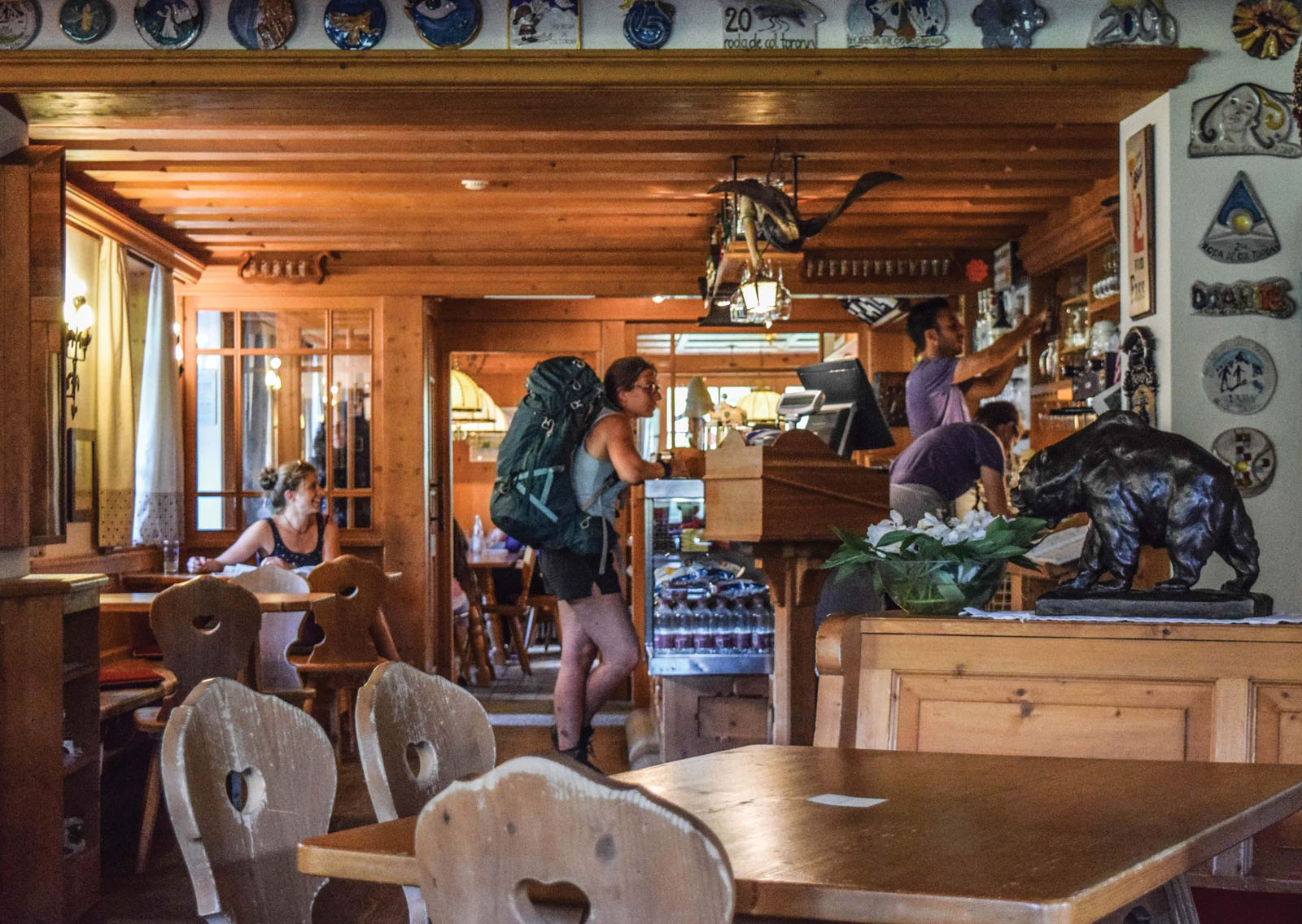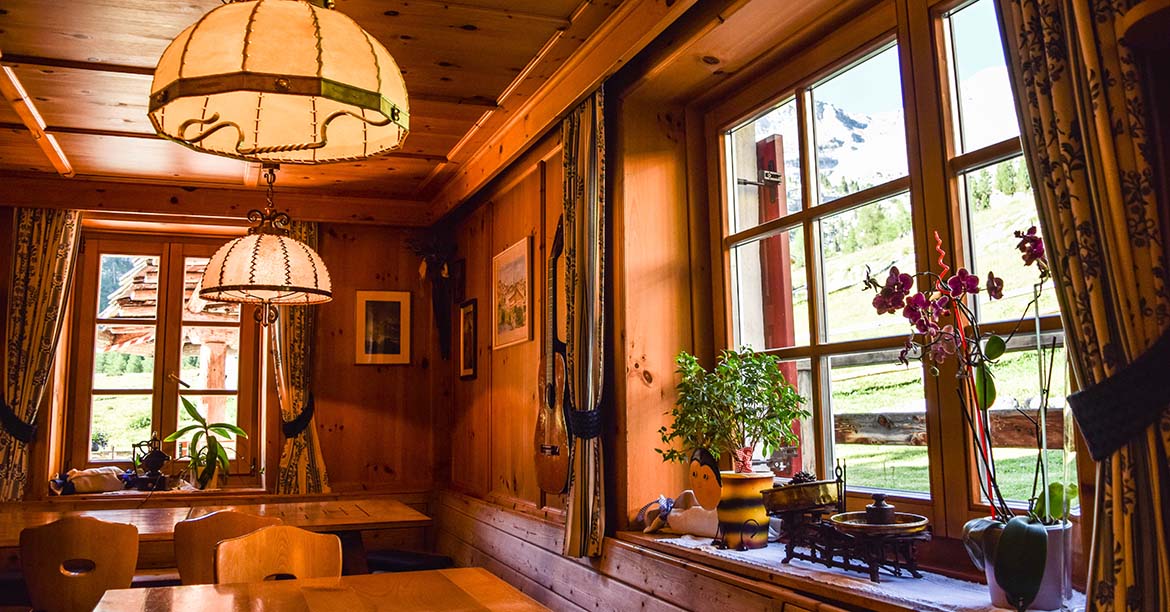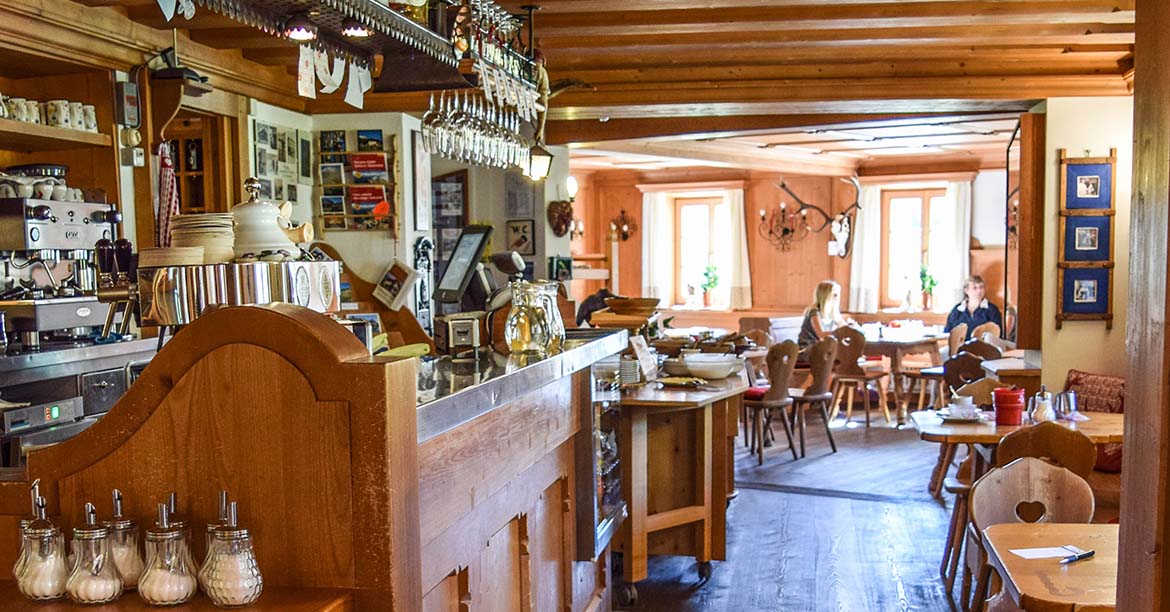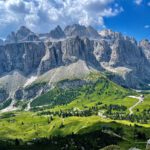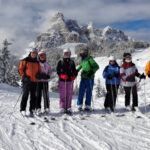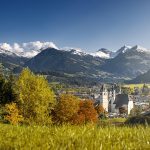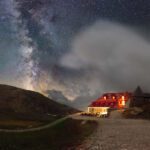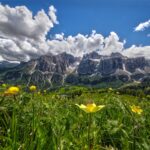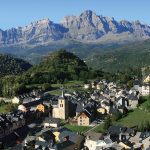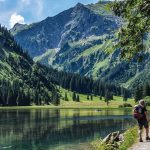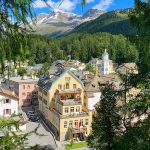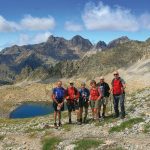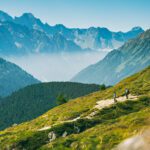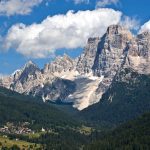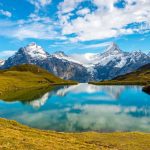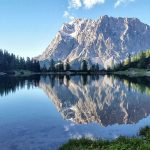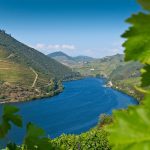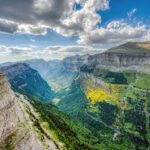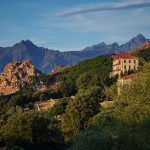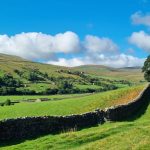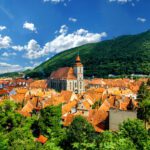This week-long trek covers the Monzoni, Marmolada, Sella, Sassolungo, Antermoia, and Rosengarten. Most of the trek unfolds at altitudes between 2000 and 2600m, exceeding 3000m at the Sella group’s lunar landscapes. Enjoy diverse terrain from high flower pastures and woodlands to thrilling rocky tracks. Traverse panorama-rich mountain ridges, marvel at Marmolada (3313m), and take in the beauty of the lost world of Antermoia.
As for your accommodation, you will wake up and still think you are dreaming, as the Val di Fassa region boasts some of the best mountain lodges in the entire Alps, each one in a location of exceptional natural beauty, and including great food.
Take a look through this page for everything you need to know about our Val di Fassa hut-to-hut walking holiday and when you’re ready, click the ‘Enquire’ or ‘Book Now’ buttons, complete the information and let our skilled enquiry team help you make this holiday a reality.
At a Glance
21 June – 20 September 2025
(You can start any day)
2-3 people – £1595
4+ people – £1495
Single supplement – £140
Challenging
Expect to walk for 5 – 7 hours each day with between 790m – 1250m of ascent and 680 – 1290m of descent.
All Hut bookings at half-board (breakfast and dinner included)
3* Hotel (bed and breakfast) on your first and last nights
Return private airport transfers between Verona, Venice or Treviso and the Val di Fassa
Holiday Pack with comprehensive route notes, maps & more
Digital Map Access for the duration of your trip
Excess Luggage Storage
Private Rooms – These can be reserved in advance in some of the mountain huts if available at a supplement of £20pp/night
4-Star hotel – for the first and last nights – contact us for details.
This holiday starts and ends in the Val di Fassa. We recommend flying into and out of either Verona, Venice Marco Polo or Treviso airports. A private transfer between your preferred airport and the Val di Fassa is included at the start and end of your holiday.
Itinerary
Day 1
Arrive in the Val di FassaMake your own way to Verona, Venice or Treviso. A private transfer from Verona, Venice Marco Polo or Treviso airport to Val di Fassa is included.
Accommodation: 3* Hotel, Val di Fassa (B&B basis)

Day 2
The Monzoni GroupRoute Statistics: 10km, 790m ascent, 680m descent, walking time – 5 hours.
The day begins with a transfer from your hotel to the impressive San Pellegrino Pass, the starting point of your trek. Today you will skirt the southern slopes of the wildlife-rich Monzoni, where you are more likely to see ibex than people. The ibex seem at peace with hikers and some will pose for the camera unperturbed. The descent to your overnight accommodation in the Contrin valley is punctuated by an unforgettable view of the Sassolungo Group, your destination on Day 4.
Accommodation: Rifugio Contrin (half board)

Day 3
At the Foot of the MarmoladaRoute Statistics: 18km, 1190m ascent, 1180m descent, walking time – 7 hours
Today’s itinerary comprises a few saddles and mountain passes before finishing up at Lake Fedaia at the foot of Marmolada, Queen of the Dolomites, highest of all Dolomite peaks and our only glacier. By-passing the untrekkable sections of Marmolada, you descend into the grassy hollow of the Ciampac, a natural amphitheatre of rare beauty with sensational views over meadows teeming with alpine flora to the cathedral-like Sella. The landscape changes abruptly during the latter stages of the day, as you ascend on a long and scenic trail to the Fedaia Pass. Pilgrims have been using this trail for centuries to access the Val di Fassa from the south.
Accommodation: Rifugio Fedaia (half board)

Day 4
The Sella GroupRoute Statistics: 12km, 1250m ascent, 740m descent, walking time – 6 hours.
Today, the colossal Sella mountain group makes a glorious destination. It was heaved up 50 million years ago from a pre-historic ocean and remains the perfect shape of a coral island. The panoramic trail toward the Sella Group is an old smuggler’s route known as the Viel del Pan, which translates as the Bread Path. It is also called the Merchant’s Route, as it was used by merchants and tradesmen moving between the Val di Fassa and Cortina many years ago. This airy trail is a panoramic joy, providing unrivalled vistas of Marmolada’s brilliant-white glacier opposite and the still azure waters of Lake Fedaia below. As you traverse a ridge at the dramatic Pordoi Pass, Sella looms large in front of you with its 1000m sheer flanks and it steep gorges reaching to a vast summit plateau. Sella’s is famous for the unique lunar landscape and rugged plateau that radiates from its highest point at 3152m. For a place that seems lifeless and other-worldly, it makes you want to celebrate life and the natural beauty of this world.
Accommodation: Rifugio Kostner (half board)

Day 5
Piz Boe SummitRoute Statistics: 12km, 900m ascent, 1220 descent, walking time – 7 hours
Today presents a rewarding challenge. If weather conditions are fair, you are destined for Sella’s summit, Piz Boe at 3152m. Get up early if you can, as Rifugio Kostner enjoys a unique location that faces the rising sun to the east, where spectacular neighbouring 3000m peaks comprise a startling scene. Your ascent to Piz Boe is characterised by an extraordinary lunar landscape on a lifeless plateau that undulates between 2500m and 2900m. It is all quite similar to the images we see from other planets. The descent from Sella is through a beautiful narrow gorge with 1000m vertical walls. Your hike ends at the foot of the Sassolungo group, where the sunset might absorb you more than anything else you have seen during the day.
Accommodation: Rifugio Friderich August/Des Alpes/Valentini (half board)

Day 6
Lost World of AntermoiaRoute Statistics: 16km, 930m ascent, 1290m descent, walking time – 7 hours
The Antermoia Group is a vast lofty region with barely any vegetation, featuring a high density of chaotically scattered peaks separated by just a few passable gorges. The trails of Antermoia are remote and little-travelled. There are no roads or lift infrastructure in the vicinity and it is a genuine escape from civilisation. Indeed, interspersed mountain huts are the only sign of human intervention. Today’s trail ascends through the bottom of a glacier-polished gorge to Lake Antermoia at 2495m. Cold and atmospheric, with yellowish cliffs towering 400m above the still waters, this will be one of the most spellbinding moments of your week.
Accommodation: Rifugio Antermoia (half board)

Day 7
The Vajolet TowersRoute Statistics: 13km, 830m ascent, 1340m descent, walking time – 6 hours
Today, you leave the wild and remote gorges of Antermoia and head for the Rosengarten, another Dolomites superstar that’s pre-historic location under the ocean makes it a fossil-rich paradise for geologists. In effect, it is a perfectly-formed coral reef, spared of any major destruction over 230 million years, stretching southwards over 10kms. Here you will see one of the region’s signature landmarks: the celebrated Torri di Vajolet (The Vajolet Towers), a monumental rock with a pinnacle split into several fragments to resemble the towers of a fairytale castle. The trail runs underneath these towers and ascends to the opposite slope, where the view of Vajolet is even more mesmerising. Another key highlight of today’s walk is the panoramic ‘Shepherd’s Trail,’ which traverses a ridge to reveal a magisterial panorama of the Rosengarten’s mountaintops with scree slopes descending to the valley. It is a fitting end to a week overdosing on remarkable scenery, but all good things come to an end and it is time to descend to your hotel in the Val di Fassa.
Accommodation: 3* Hotel, Val di Fassa (B&B basis)

Day 8
DepartReturn private transfer from Val di Fassa to Verona, Venice Marco Polo or Treviso Airport (included). Be prepared for an early start. It’s a 2hr 45min transfer so if your flight is at 11am, we’ll aim to have you collected at 6.15am.

Need to Knows
Trusted Local Partner – please note that this holiday has been organised by us in association with a trusted local partner based in the Italian Dolomites.
Minimum group size – this holiday requires a minimum of two people.
Terrain – on a typical hut-to-hut route the terrain varies significantly, but for most of the route you will be hiking through moderately difficult terrains. Exposed trails are not unusual on these routes, but they are widened or properly secured, normally with a metallic cord or chain, so that hikers pass without gear safely. This holiday only use waymarked and signposted routes. Trails vary from well-trodden woodland paths to steeper paths on looser, rocky terrain and in the high mountains a certain level of experience, surefootedness, and fitness are essential. In early season on higher terrain, you might also have to cross patches of late lying snow.
Rifugios – Except for your first and last nights, you will stay overnight in ‘rifugio’ (mountain huts). These generally offer the following facilities: a bed in a shared room or in a private room (these musty be booked in advance and cost £20pp/ night extra, subject to availability), showers with hot water, toilets, meals, and a water supply for refilling water bottles. Snacks such as sandwiches and chocolate are also usually available for sale. Shared rooms are equipped with bunk beds with mattresses, pillows and blankets. Bed linen is not provided in shared bedrooms: you must have a sleeping bag liner (typically, this is simply a light cotton bag). A warm sleeping bag is generally unnecessary, since there are always blankets in the rooms. If you have pre-booked a private room you are often offered bed linen, thus a sleeping bag liner is not required but this will be confirmed when you book. Finally, you will need clean footwear for the huts: light sliders are an ideal solution.
Breakfast & Dinner – Normally, breakfast is served from 7am to 9am. It usually includes unlimited tea and coffee, bread, butter, jam, honey and chocolate spread. In addition, some mountain huts also offer ham, cheese and muesli. You can also fill up your your flask/thermos with hot water or tea at breakfast: ask the staff, and it will be free in most huts. Dinner is usually served at 7pm or 7:30pm for all guests. A typical dinner in a mountain hut is very rich and includes a starter, a first course (such as pasta, risotto, dumplings), a second course (meat with a side dish) and a dessert. Any drinks at dinner (water, wine, beer, tea, coffee) are not included and should be ordered and paid separately.
Lunch – It is often possible to stop for lunch in the mountain huts you pass on the route, but this option is not always available. In such cases we recommend you buy some light snack (sandwiches, yoghurt, chocolate, water) from the hut where you have stayed the previous night. Mountain huts prepare for lunch the same dishes as for dinner. The cost of a typical hot dish, e.g. pasta or risotto, in a mountain hut varies from €7 to €12.
Safety – It is your responsibility to be wear appropriate outdoor clothing, follow good practice safety in the mountains procedures and be realistic when calculating how long the route each day will take you given your fitness, experience. and ability. These self-guided hut-to-hut walking trips are planned so that they do not require specific skills or gear, unless it is clearly specified in the itinerary. You can expect well-maintained trails equipped with direction signs. Exposed sections of the trail are secured on the self-guided routes: it makes them safe provided that you follow the basic safety rules for hiking in the mountains.
Weather – The weather in the Dolomites is most stable from the second week of July till the middle of September. This period in the Dolomites is characterized by warm sunny weather and modest rainfall. Earlier in June, the weather is normally favourable, but it is less reliable, and the mountain passes may be blocked by snow remaining from the winter. In June we may have to change the route depending on the snow situation on the passes. The second half of September in Dolomites is a beautiful period, but the weather is again less predictable: the probability of incessant rain increases, and it may snow at the altitude above 2,000 meters.
It is never hot in the Dolomites at the elevation of 2,000 m and above where most of the hiking routes pass. In a sunny day in August the temperature at 2,000 m can reach 20° Cduring the warmest hours of the day. It is comfortable for hiking. In a cold cloudy day, the temperature can stay at around 10° C during the entire the day. It is always chilly at night and early in the morning. Thunderstorms, often with hail, are typical for the warmest months (July and August). In the Dolomites valleys at the altitudes of 1,000 – 1,500 m the day temperature can reach 27° C. It is fresh in the valleys in the morning and evening, and it is not stuffy at night even in the hottest weeks of the summer.
ETIAS – The European Travel Information and Authorisation System is not due to be introduced until mid-2025. Currently there is not an exact date as to when it will come into force. This means you do not need to have a ETIAS for travel to Europe at the moment. For more information read our blog article here
Booking Conditions – be sure to read our full terms and conditions here before booking.
At Your Own Risk – please read the important notes here.
Travel Advice – check your government’s travel advisory for up-to-date information and advice about your destination. For UK citizens, check the latest Foreign, Commonwealth & Development Office advice here.
Passport & Visa – any questions should be directed to the relevant embassy of your destination country; find out more here. It is your responsibility to be in possession of a full passport, valid for your chosen destination.
Travel Insurance – having adequate and valid travel insurance is a condition of booking with us. Details of our insurance partner, Campbell Irvine, are here.
Health Information – You should carry either an European Health Insurance Card (EHIC) or a Global Health Insurance Card (GHIC) Neither is an alternative to adequate travel insurance. For more information visit https://www.gov.uk/foreign-travel-advice and https://travelhealthpro.org.uk/
ABTA – Independent travel advice and help is always available from ABTA by calling 020 3117 0599 or visiting www.abta.com.
